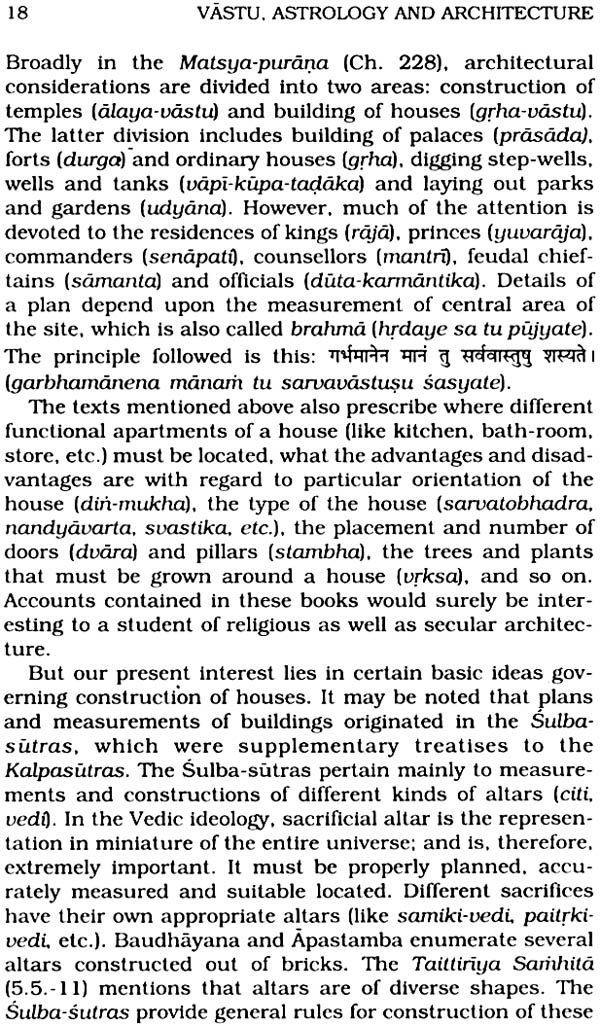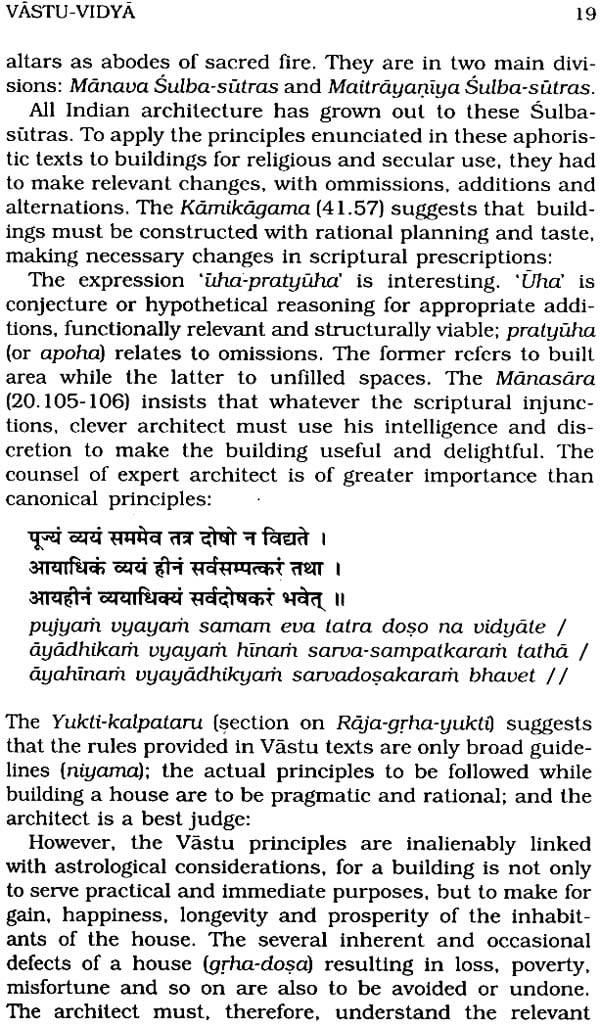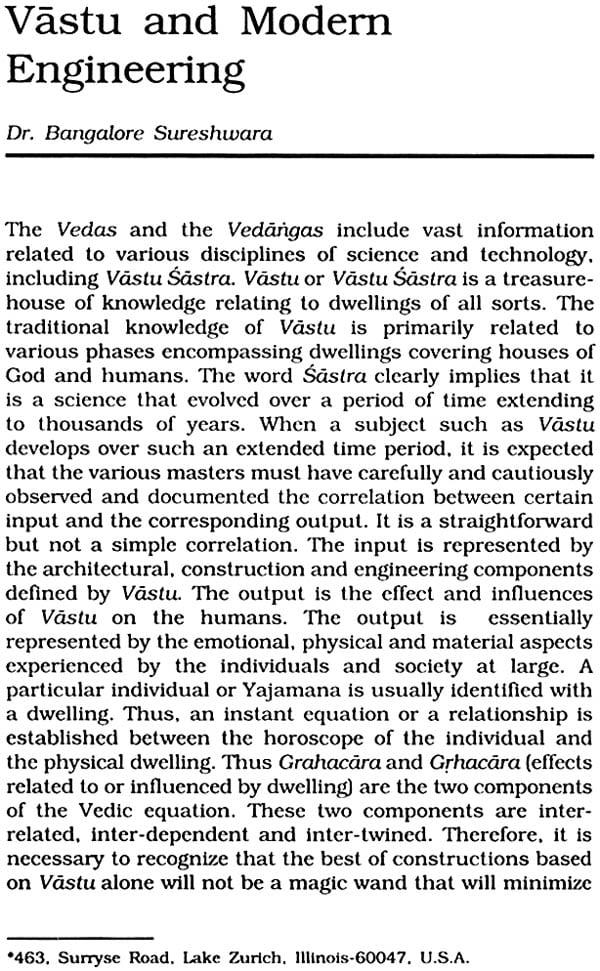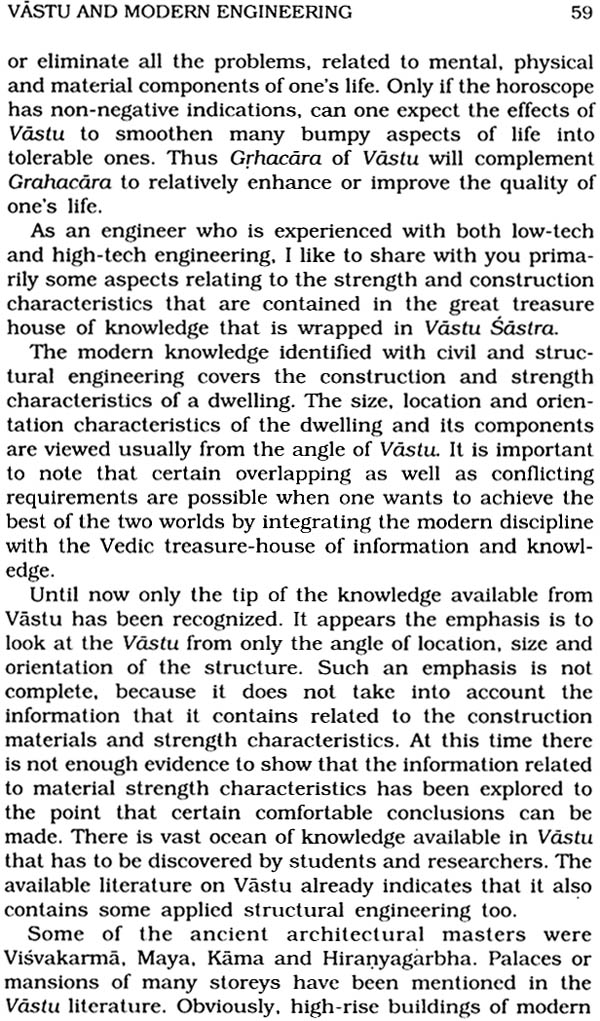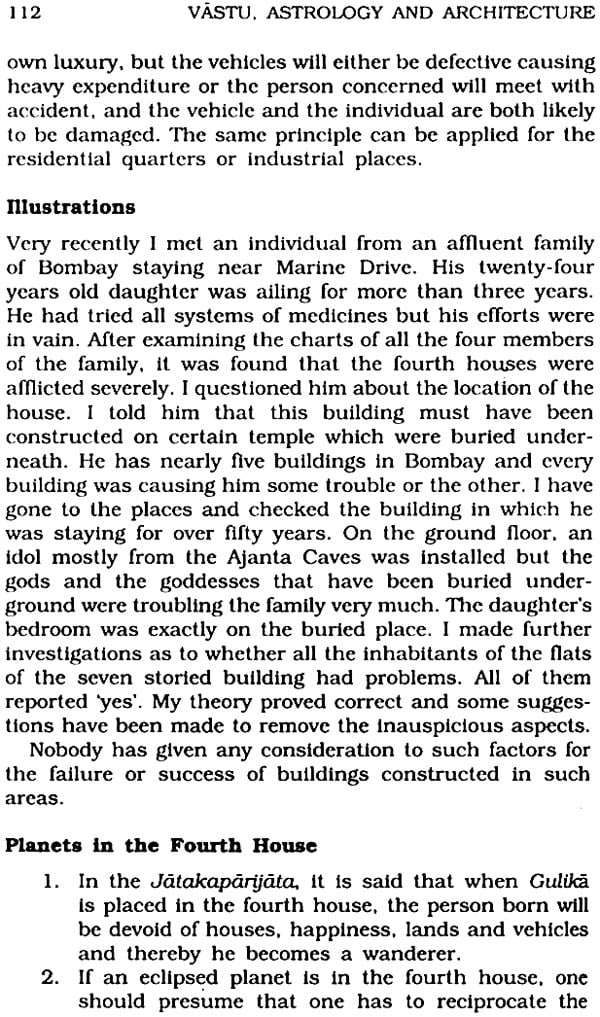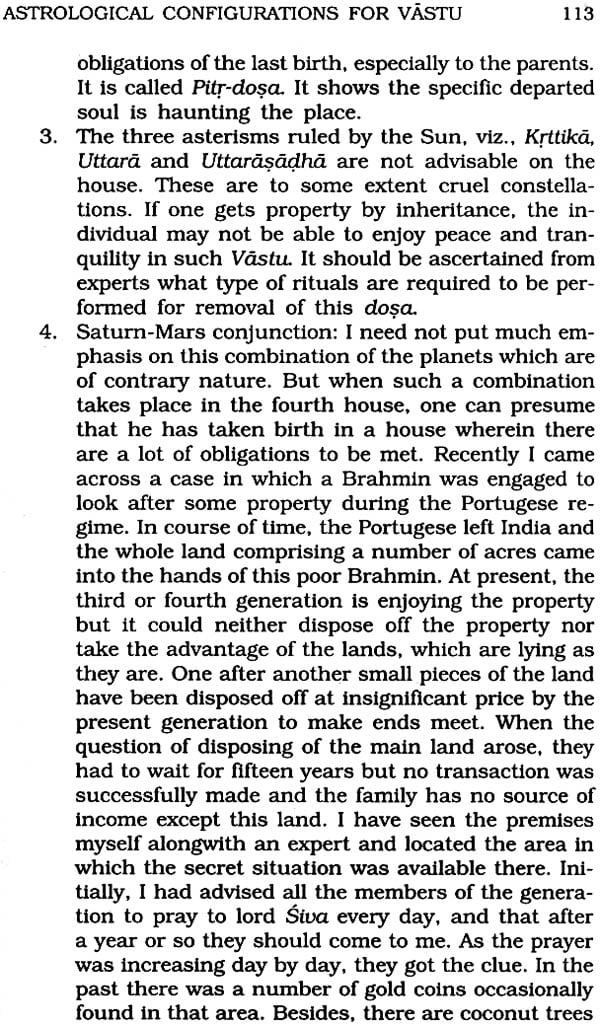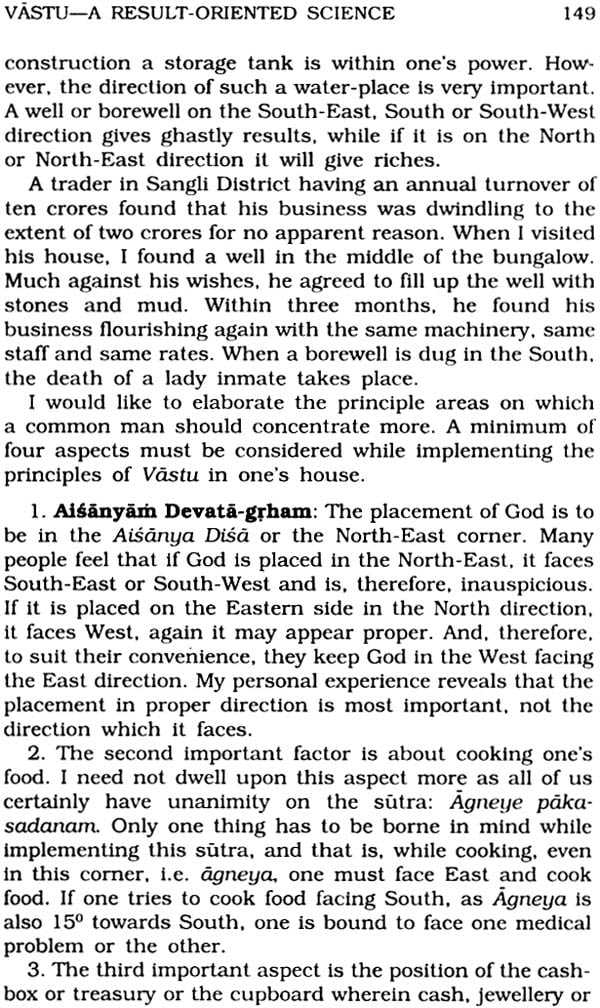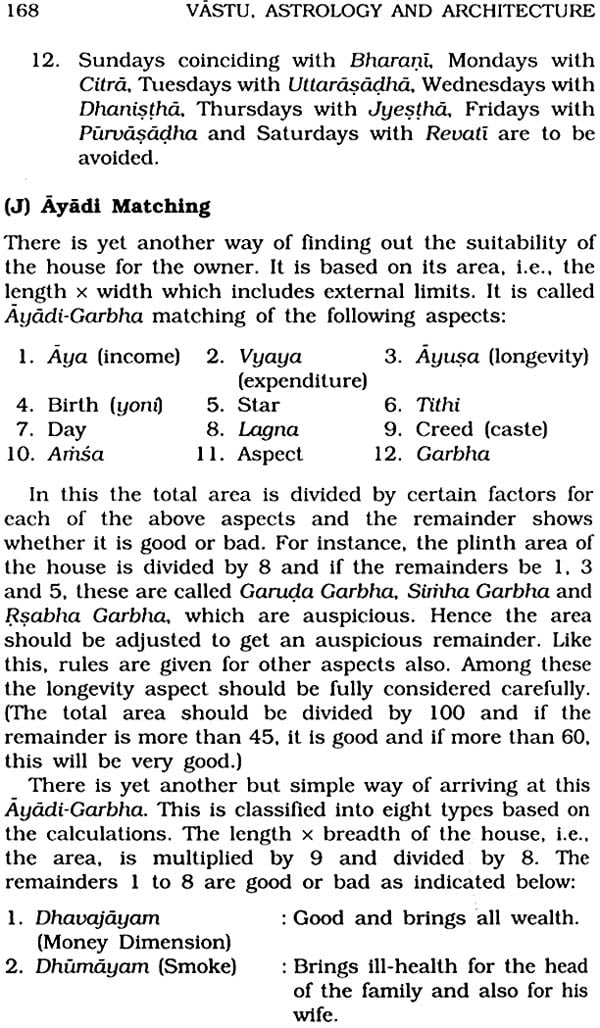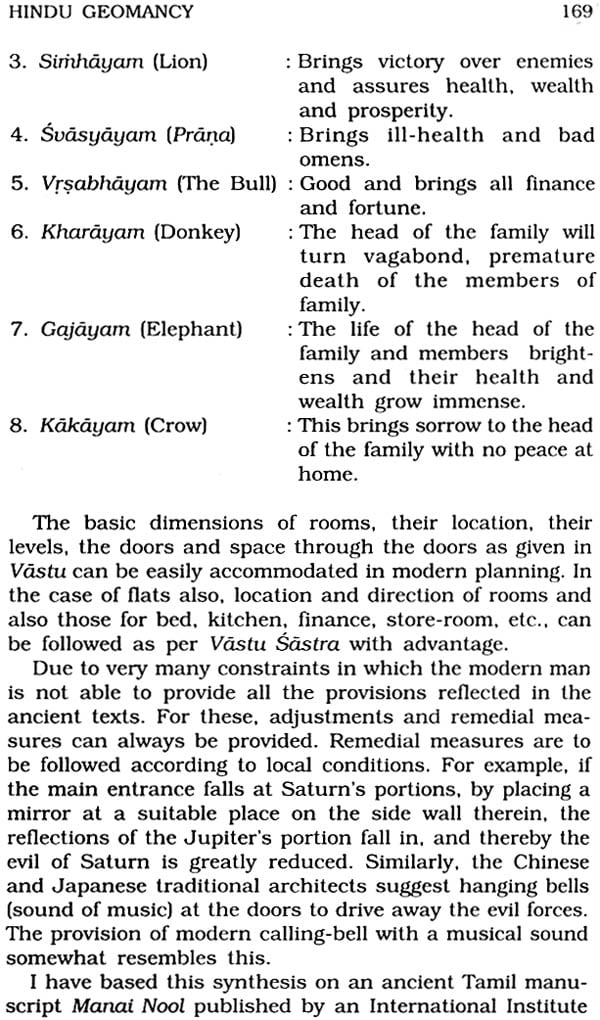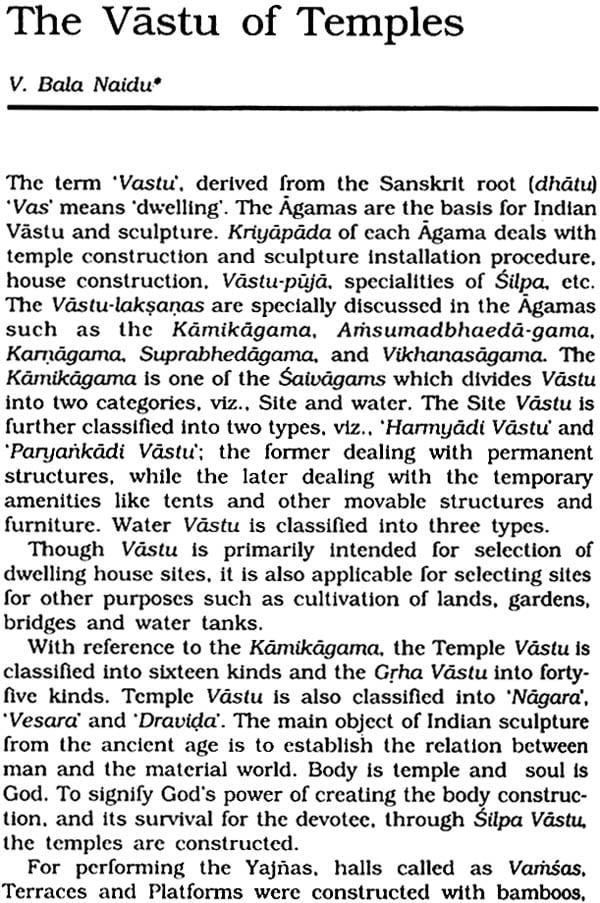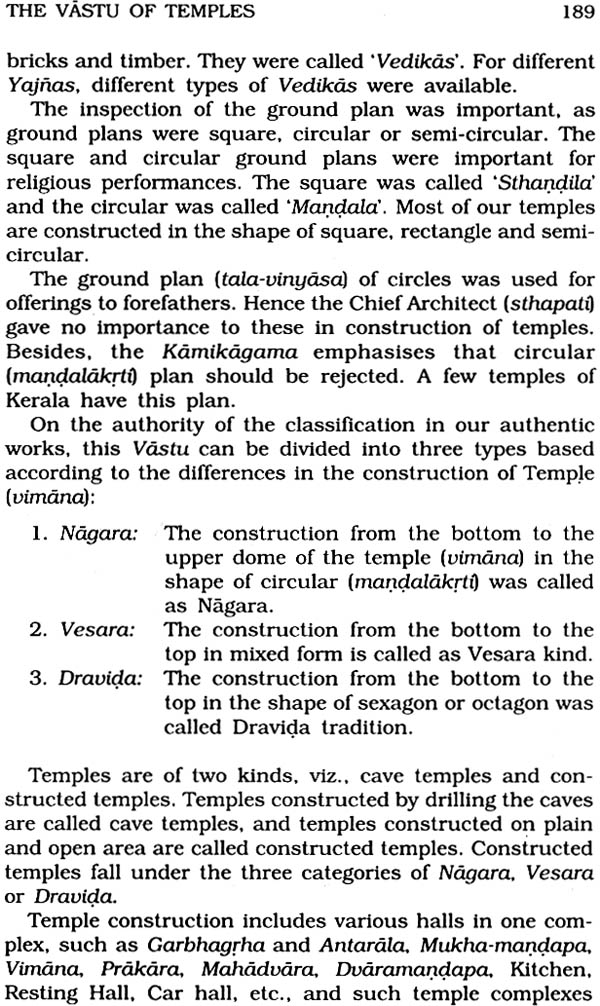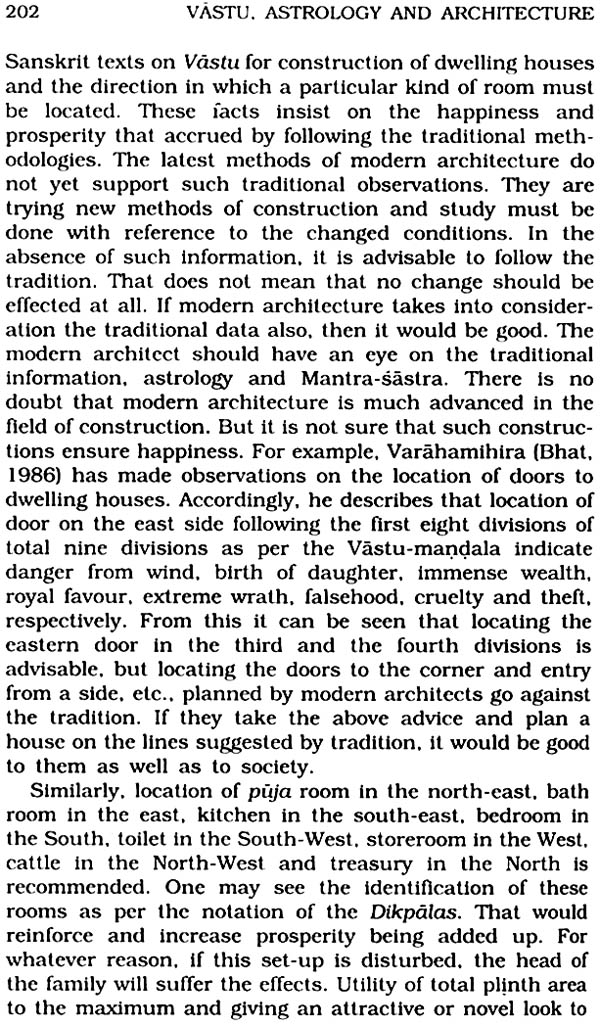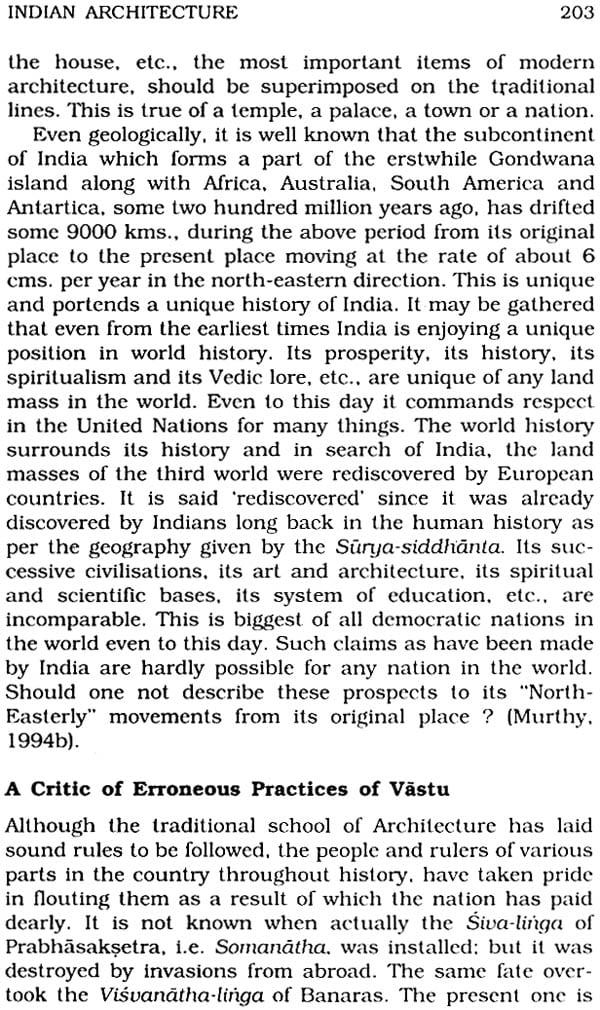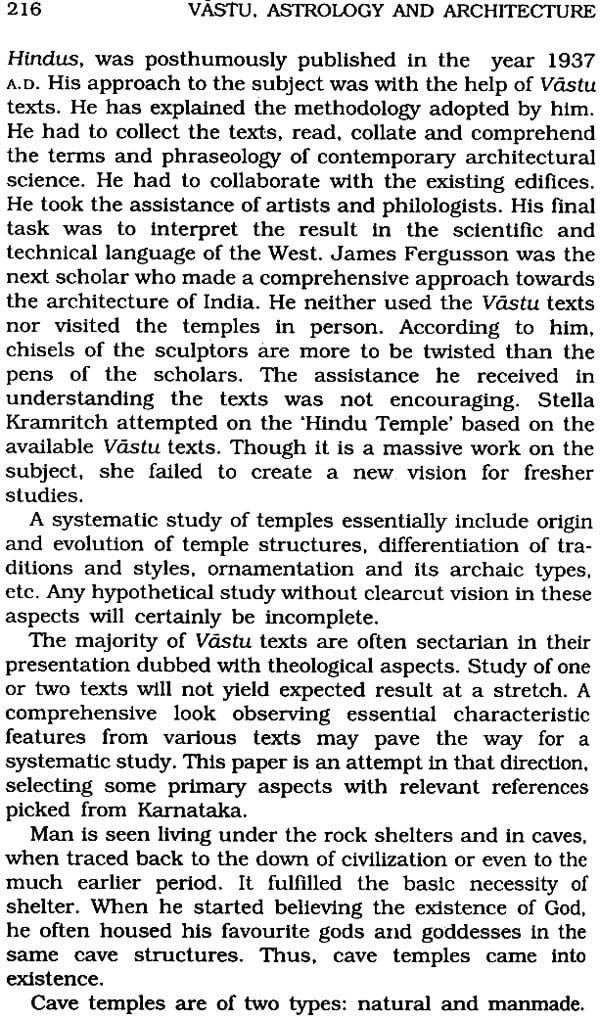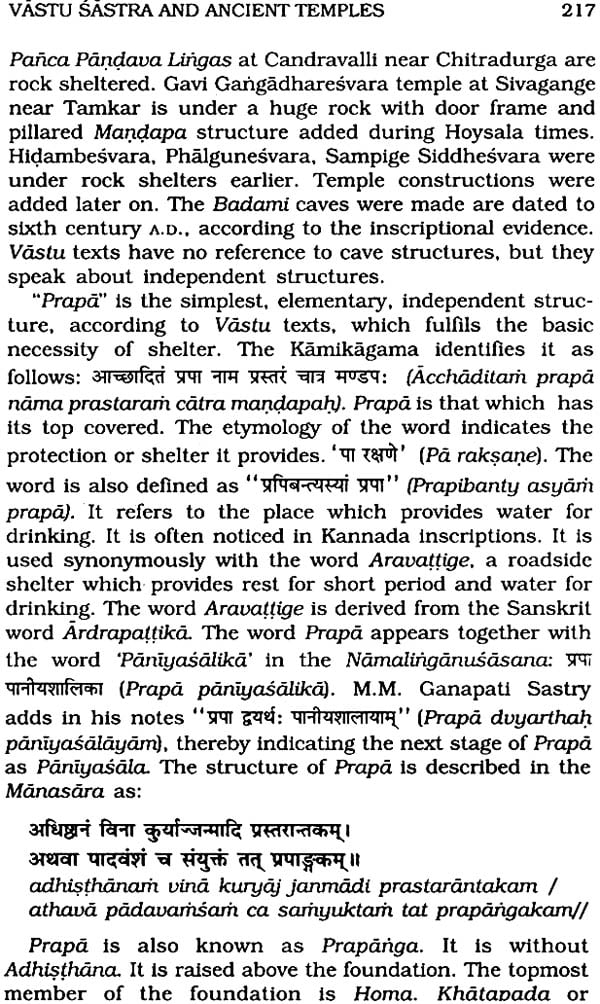
Vastu Astrology and Architecture (Papers presented at the First All India Symposium on Vastu, Bangalore, held on June 3-4, 1995)
Book Specification
| Item Code: | IDI723 |
| Author: | Gayatri Devi Vasudev |
| Publisher: | MOTILAL BANARSIDASS PUBLISHERS PVT. LTD. |
| Language: | English |
| Edition: | 2021 |
| ISBN: | 9788194930297 |
| Pages: | 248 (Black & White Figures: 18) |
| Cover: | Paperback |
| Other Details | 8.5" X 5.5" |
| Weight | 470 gm |
Book Description
Vastu Astrology And Architecture
Vastu Sastra, an important limb of Jyotisa or astrology, is an ancient science and study of architecture and engineering.
The present volume is an outcome of a symposium on Vastu. One of the goals of the symposium was to revive the lost glory of Vastu and show its relevance to modern times. The book covers different aspects of construction from planning to execution. It underlines the role of Jyotisa (astrology) in Vastu principles.
The book will stimulate greater interest in ancient Vastu principles amongst modern architects and engineers and present them a new perspective which will raise their creativity to new untouched heights.
The book has been divided into three broad sections covering different aspects of Vastu Silpa-I. Vastu and its Relevance to Modern Times; II. Vastu and Jyotisa; and III. Vastu and Temple Architecture comprising thirty-three articles in all. Their contributors represent a range of viewpoints on Vastu principles. Al write with intelligence and insight keeping in view it relevance with modern times need of architecture and engineering.
Mrs. Gayatri Devi Vasudev, editor The Astrological Magazine, has worked for 27 years with its Founder Editor Dr. B. V. Raman until his death is 1998 in his mission to bring astrology into the comity of sciences. She continues his mission and has been National vice president of Indian Council of Astrological Sciences founded by Dr. B. V. Raman in 1984.
She has authored many books on astrology that include Clues to Interpreting Charts (under print), The Art of Matching Charts, Practical Horary Astrology and How to Judge a Horoscope-Volume II. She has edited Astrology and the Hoax of "Scientific Temper", Astrology in Predicting Weather and Earthquakes, Astrology, Vastu and Architecture, Dr. B. V. Raman-The Man and His Mission, etc.
Editor's Note
We are happy to bring out this collection of papers read at the First Al India Symposium on Vastu held on June 3 and 4, 1995, at the Banquet Hall of the Vidhana Saudha, Bangalore. The Symposium was organized by Raman Rajeswari Research Foundation, Bangalore.
Vastu Sastra, an important limb of Jyotisa or astrology, is the science and study of ancient architecture and engineering. Vastu rules have been followed meticulously in temple and town construction of ancient times. Many temples, and town construction of ancient times. Many in temple, such as the Tirupati Sri Venkatesvara Temple and the Ramesvaram Temple are standing monuments to the profundity and correctness of Vastu principles.
As a result of political convulsions in India, the science of Jyotisa which includes Vastu, was neglected for a long time. Thanks to untiring efforts of Dr. B. V. Raman, Editor, The Astrological Magazine, Jyotisa or astrology is being revived with great interest in the country.
The principles of Vastu are now being explored and applied with excellent results in the construction of residential buildings, including official quarters, commercial complexes, hotels, amusement centres, business premises, public buildings such as schools and hospitals as also industries. In fact, renovation and reconstruction of sick units in accordance with principles of Vastu have led to greater prosperity.
The goals of this Symposium were:
1. To bring before discerning public and intelligentsia the lost glory of Vastu and its relevance to modern times.
2. To present research findings by Vastu scholars which validate ancient Vastu principles.
3. To promote free exchange of ideas on Vastu between scholars of Vastu and modern architects and engineers.
4. To revive and promote a study of Vastu in its application to house construction, public buildings, commercial complexes and construction of temples, gurudwaras and other places of worship.
The fact that the Symposium was held under our banner and was able to bring together for the first time best men in the field on a national level, was a matter of great gratification for all interested in an ancient Vedic culture, especially Jyotisa and its various aspects including Vastu Vidya.
Many of the papers presented by galaxy of speakers on different aspects of science and technology of Vastu at the Symposium could not be included in the Souvenir released on the occasion and have been included in this volume a few of the papers have already appeared in the Symposium Souvenir, but since only a limited number of copies were brought out for the occasion, they have also been included in this volume. We believe these papers will stimulate greater interest in Vastu Amongst modern architects and engineers and impress upon academic bodies the need to include this Vedic science in the engineering course as part of curriculum. We thank all those who presented the papers included in this volume.
The papers have been divided into three Sections "Vastu and Its Relevance to Modern times" (Section I); "Vastu and Jyotisa" (Section II) and "Vastu and Temple Architecture" (Section III). However, it has not been possible to rigidly compartmentalize the papers in terms of content into these three sections and some overlapping has been unavoidable.
Thanks are due to Prof. N. M. Kansaria for his commendable assistance in thorough revision of the Sanskrit quotations and his transliteration of Sanskrit Slokas and terms into the Roman script.
We are thankful to Mr. J. P. Jain of Motilal Banarsidass for having come forward to bring out all papers in a book form.
| Editor's Note | v |
| VASTU AND ITS RELEVANCE TO MODERN TIMES | |
| Relevance of Vastu | 3 |
| Dr. B. V. Raman | |
| Vastu Vidya | 13 |
| Prof. S. K. Ramachandra Rao | |
| The Status and Relevance of Vastu in the Contemporary Context | 28 |
| V. Ganapati Sthapati | |
| The Concept of Vastu Purusa Mandala | 37 |
| H. A. Savarkar | |
| The Vastu Purusa | 45 |
| M. S. Thirumalachar | |
| Vastu for Multi-storeyed Residential Buildings | 49 |
| Dr. S. P. Sabharathnam | |
| Vastu and Modern Engineering | 58 |
| Dr. Bangalore Sureshwara | |
| Importance of Vastu | 64 |
| Madhura Krishnamurty Sastry | |
| Vastu for Revival of Sick Industries | 69 |
| B. N. Reddy | |
| Vastu Sastra: Its Importance | 74 |
| K. V. R. Anjaneyulu | |
| Vastu and Town Planning | 79 |
| K. Marimuthu | |
| Relevance of Ancient Vastu Technology to Modern Town Planning | 82 |
| K. V. Raja Rao | |
| Hospitals and Consulting Chambers | 93 |
| Dr. Bhargava C. Babu | |
| Vastu: Yesterday and Day Before | 95 |
| Prof. S. A. Deshpande | |
| General Vastu Guidelines | 101 |
| C. H. Gopinath Rao | |
| VASTU AND JYOTISA (ASTROLOGY) | |
| Astrological Configurations for Vastu | 111 |
| S. K. Kelkar | |
| Vastu in Astrology | 115 |
| Dr. T. S. Vasan | |
| Vastu and Jyotisa | 121 |
| A. Narasimha Alse | |
| Relevance of Muhurta of Vastu Sastra | 124 |
| S. Krishna Kumar | |
| The Efficacy of Vastu Sastra | 141 |
| Kowtha Lalith Manohar | |
| Vastu: A Result-Oriented Science | 146 |
| Arvind Pandurang Vaze | |
| Vastu or the Heavenly Planets in Human Houses | 152 |
| R. G. Rao | |
| Hindu Geomancy | 157 |
| U. S. Pulippani | |
| Rectification Through Vastu Principales | 171 |
| K. S. Ananda Kumar | |
| Vastu and Remedial Measures | 175 |
| K. R. Dasa Setty | |
| VASTU AND TEMPLE ARCHITECTURE | |
| References to Vastu in the Scriptures | 181 |
| M. V. Janardana | |
| The Vastu of Temples | 188 |
| V. Bala Naidu | |
| The Sabda-Dosas in Aarseya Vastu Grantha | 192 |
| Sri Ramakavacham Venkateswara Sarma | |
| Indian Architecture | 195 |
| Dr. S. R. N. Murthy | |
| Vastu Principles in the Construction of Theatres | 206 |
| Dr. B. V. Venkatakrishna | |
| Vastu Sastra and Ancient Temples (With Special Reference to Temples in Karnataka) | 214 |
| M. N. Prabhakar | |
| Basics of Temple Interiors | 227 |
| Ganapathi Kadirappa | |
| Some Research Notes on Vastu | 233 |
| Brahma Ganapathi Kadirappa |
